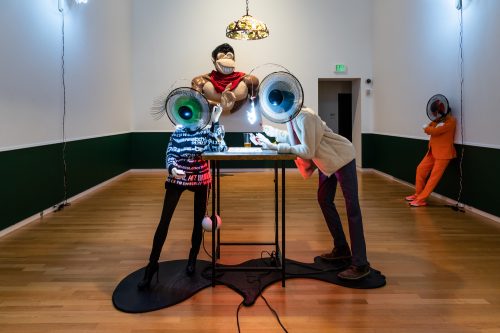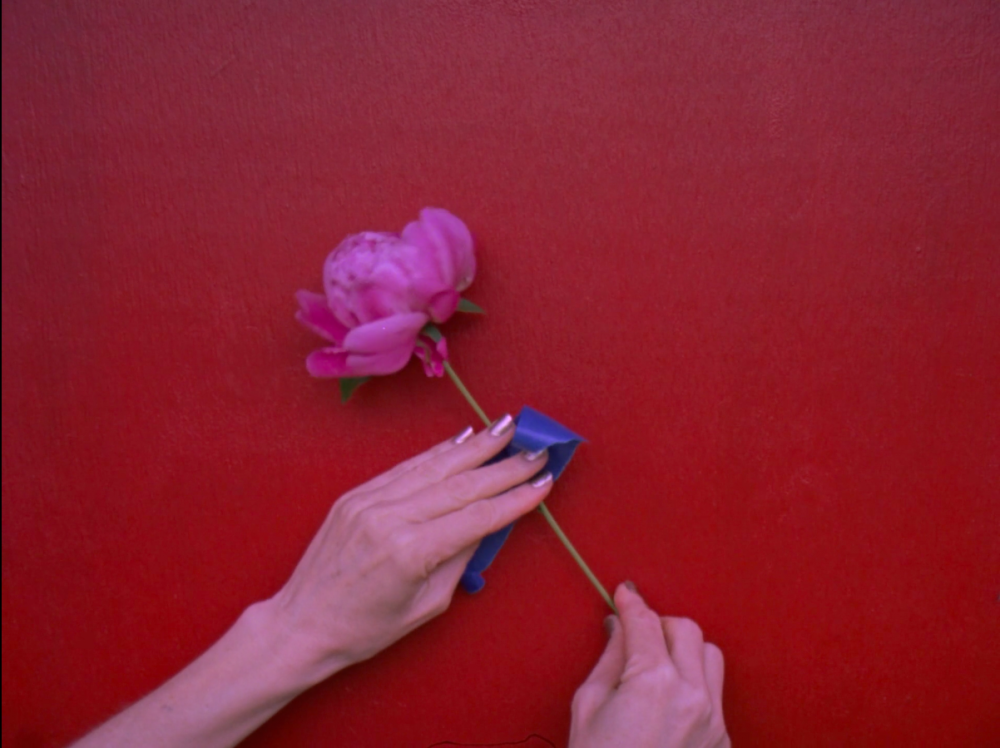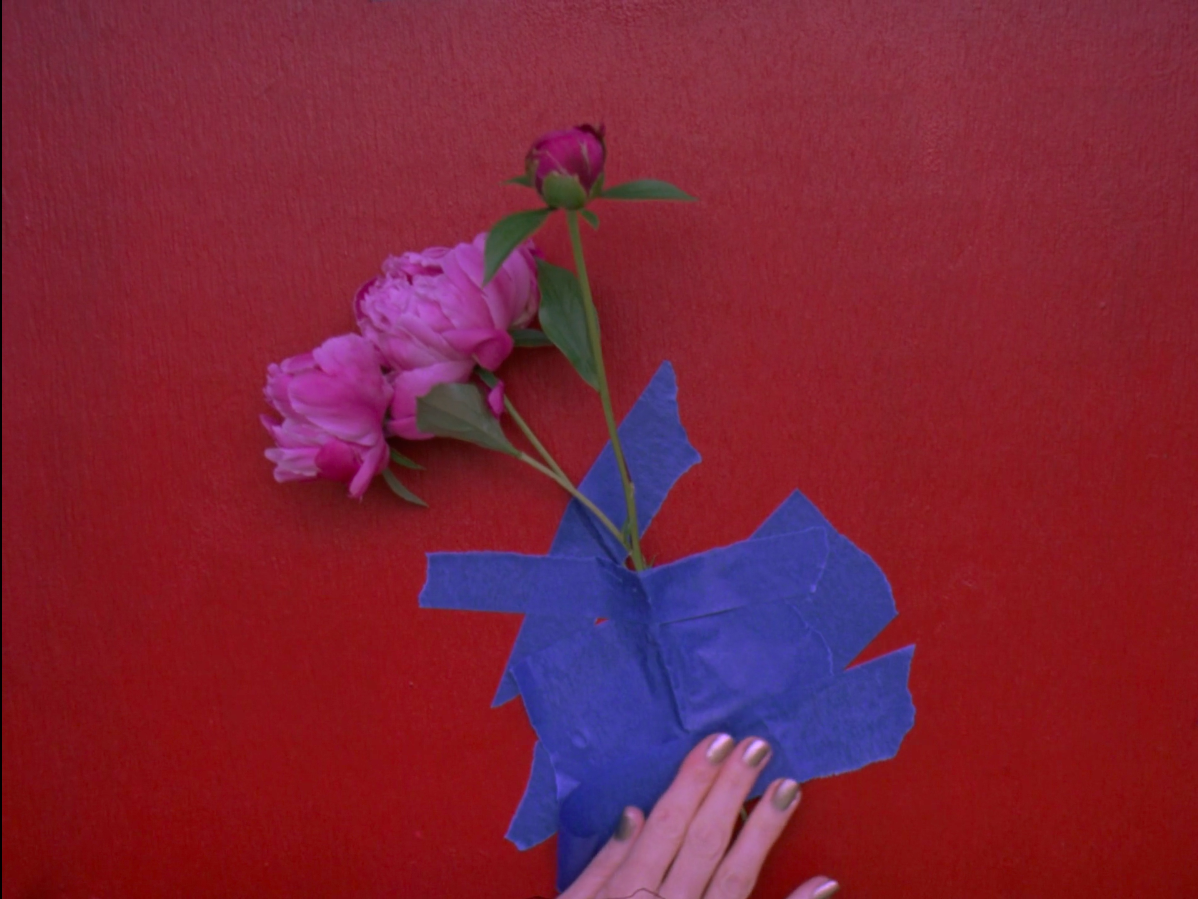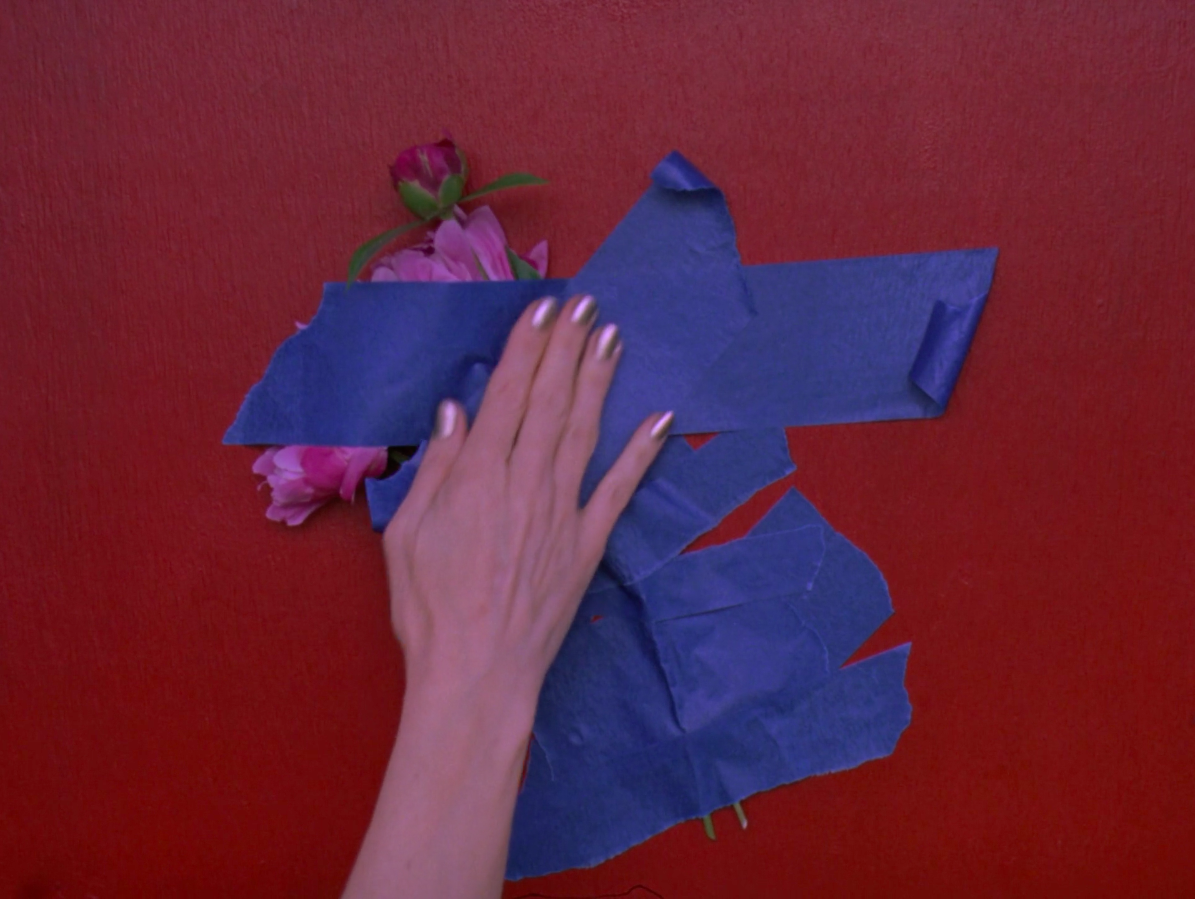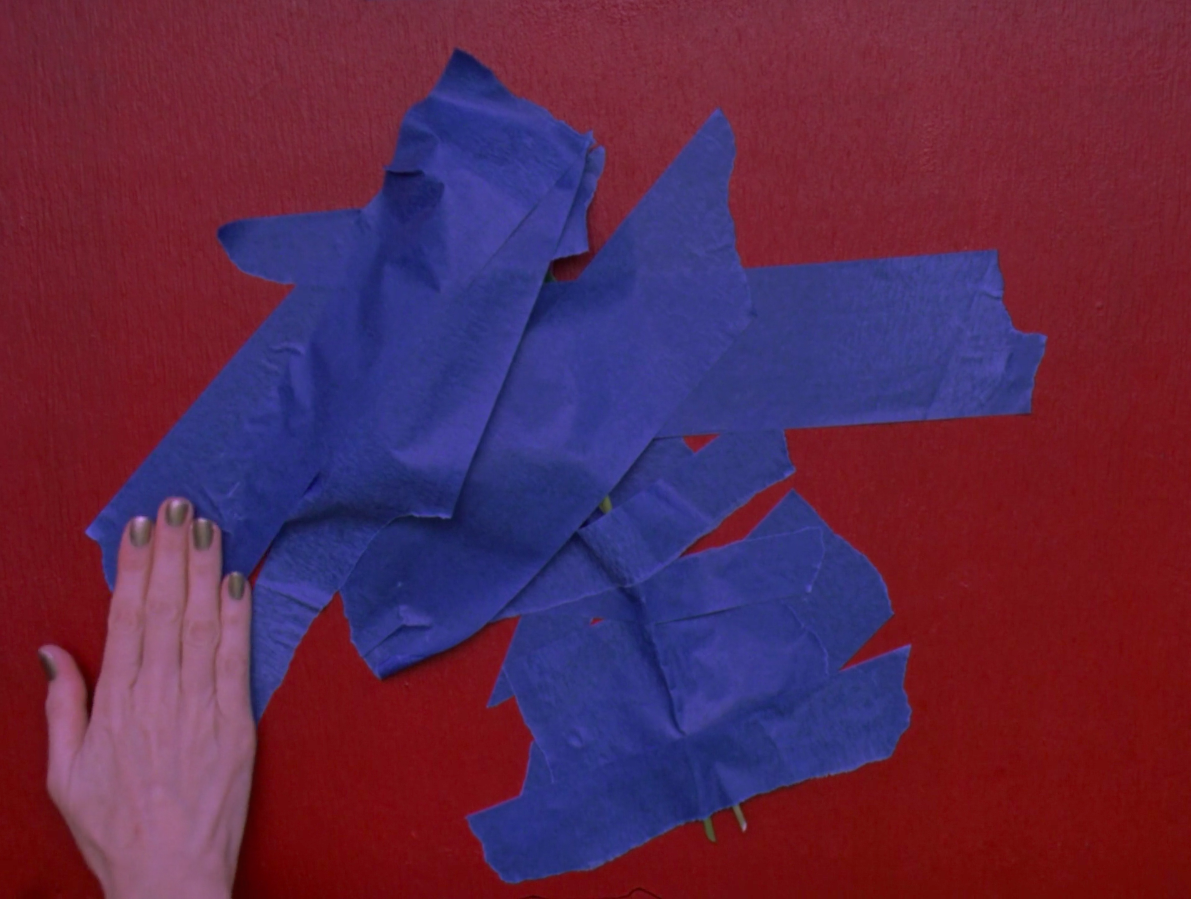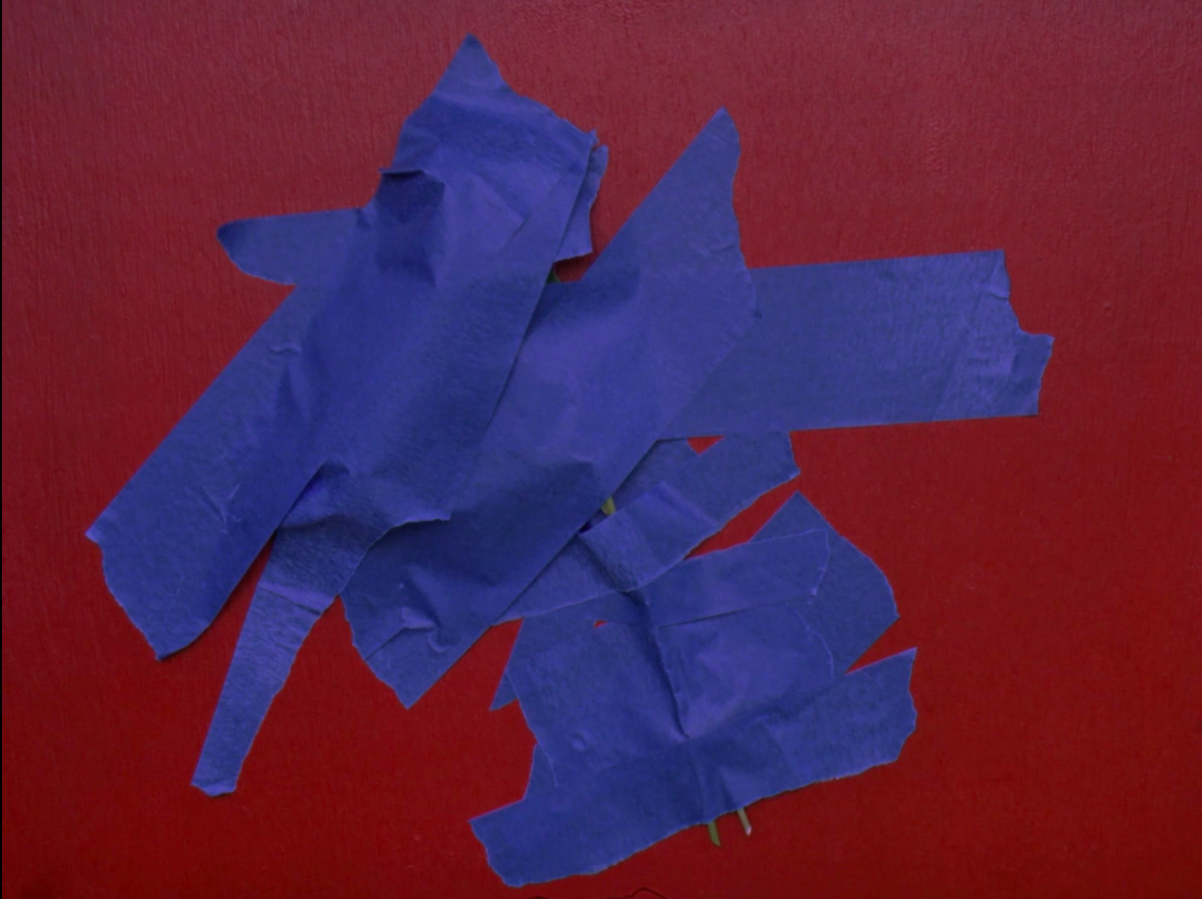Everything matters to Stephanie Barber. The artist’s portfolio of feature-length films, smaller-scaled videos, poetry, music, and visual-aural installations is like a vase fat with flowers, the exuberant result of her talent poured into different mediums over the course of several years. Reflecting on Barber’s work in the 2016 Sondheim finalist exhibition, BmoreArt contributor Bret McCabe noted, “After looking at and reading Barber’s work for nearly a decade I have to confess that when I encounter it now all I’m confronted with is the overwhelming emotional complexity she’s aiming for with every aspect of her creative practice.”
Barber creates every piece, polishes every word and stroke, as if it were her last: Each feels loved and lived-in. Experiencing her art is like watching a dream play out, feeling both familiar and surreal. Her 2017 video piece “3 Peonies,” currently featured in the Baltimore Museum of Art’s virtual Screening Room, is no different. “3 Peonies” is a practice in both creating and capturing the mundane. Barber has bedazzled the banal drone of daily, modern life so that it shines in your eyes and clings. She does not want you to stop and smell the roses, she wants you to worship them.

